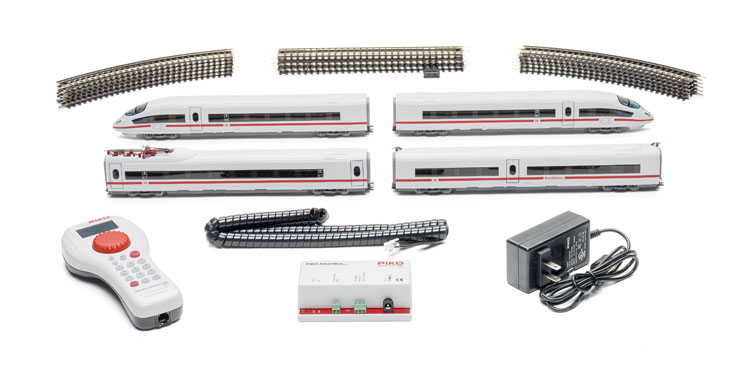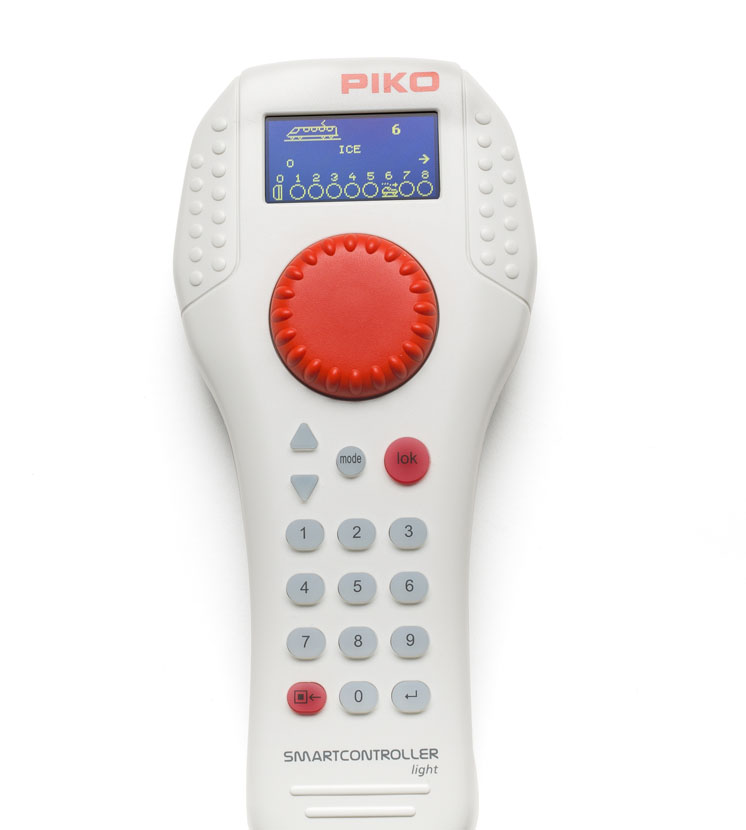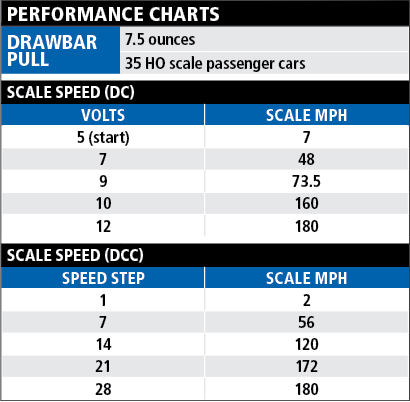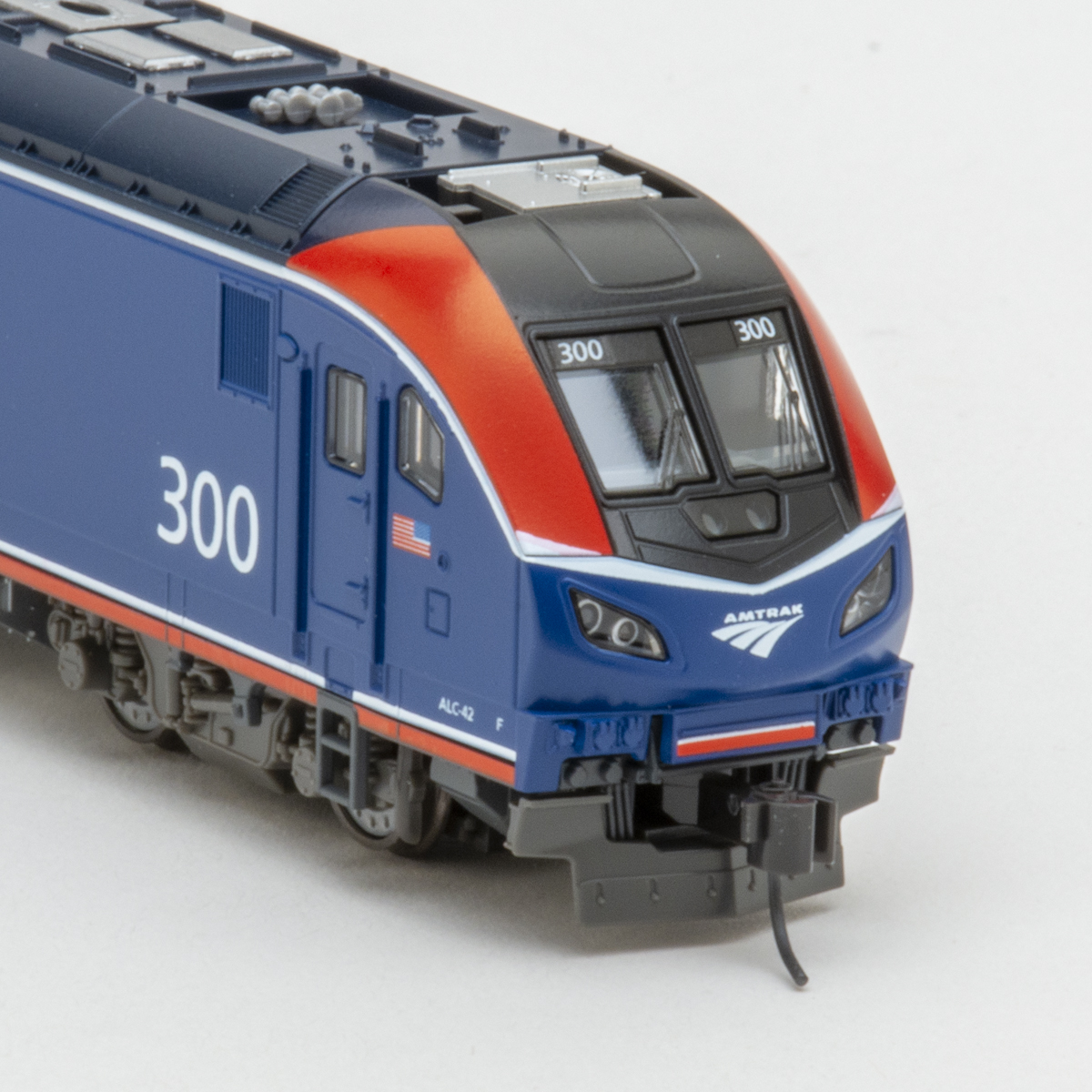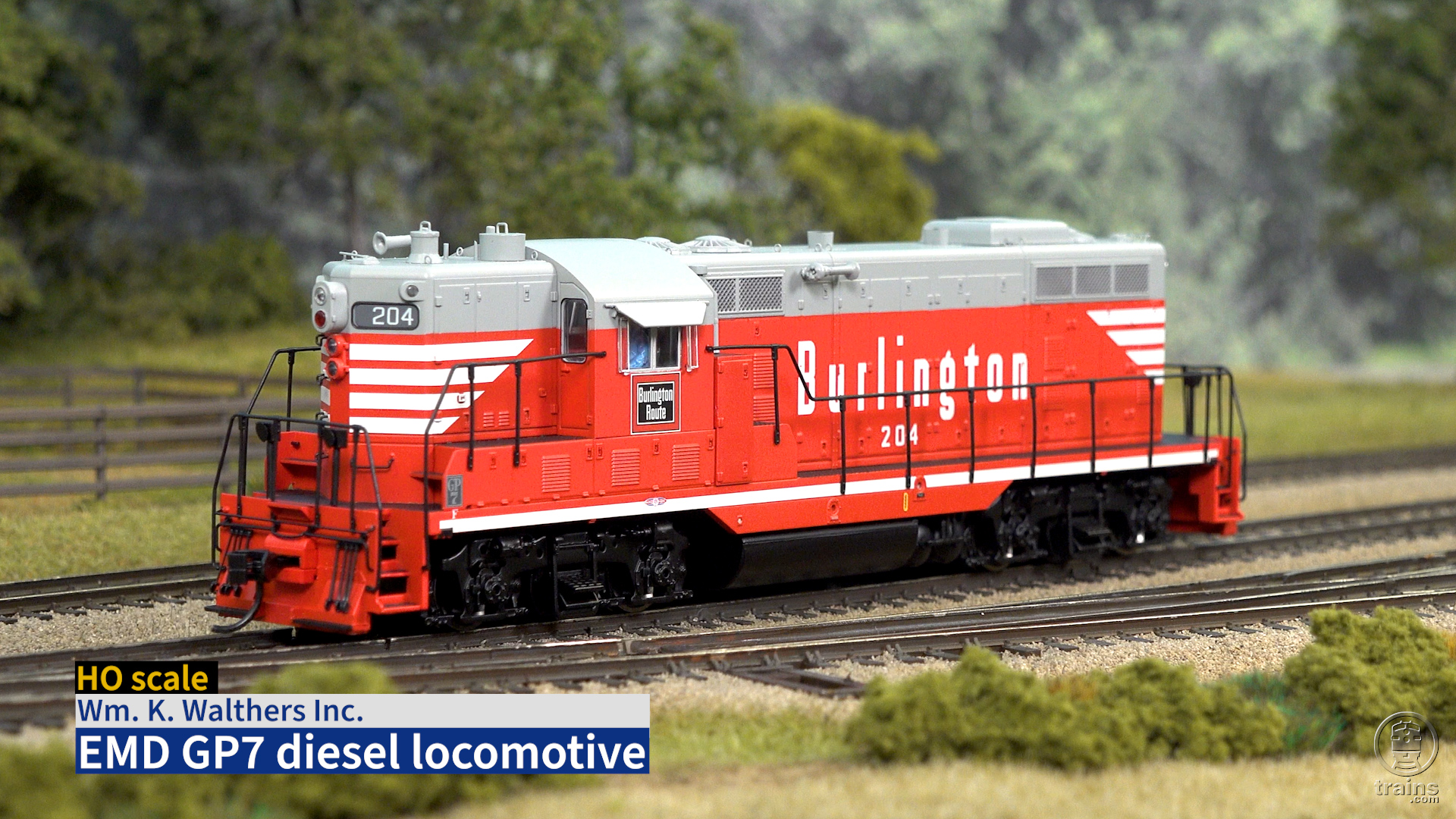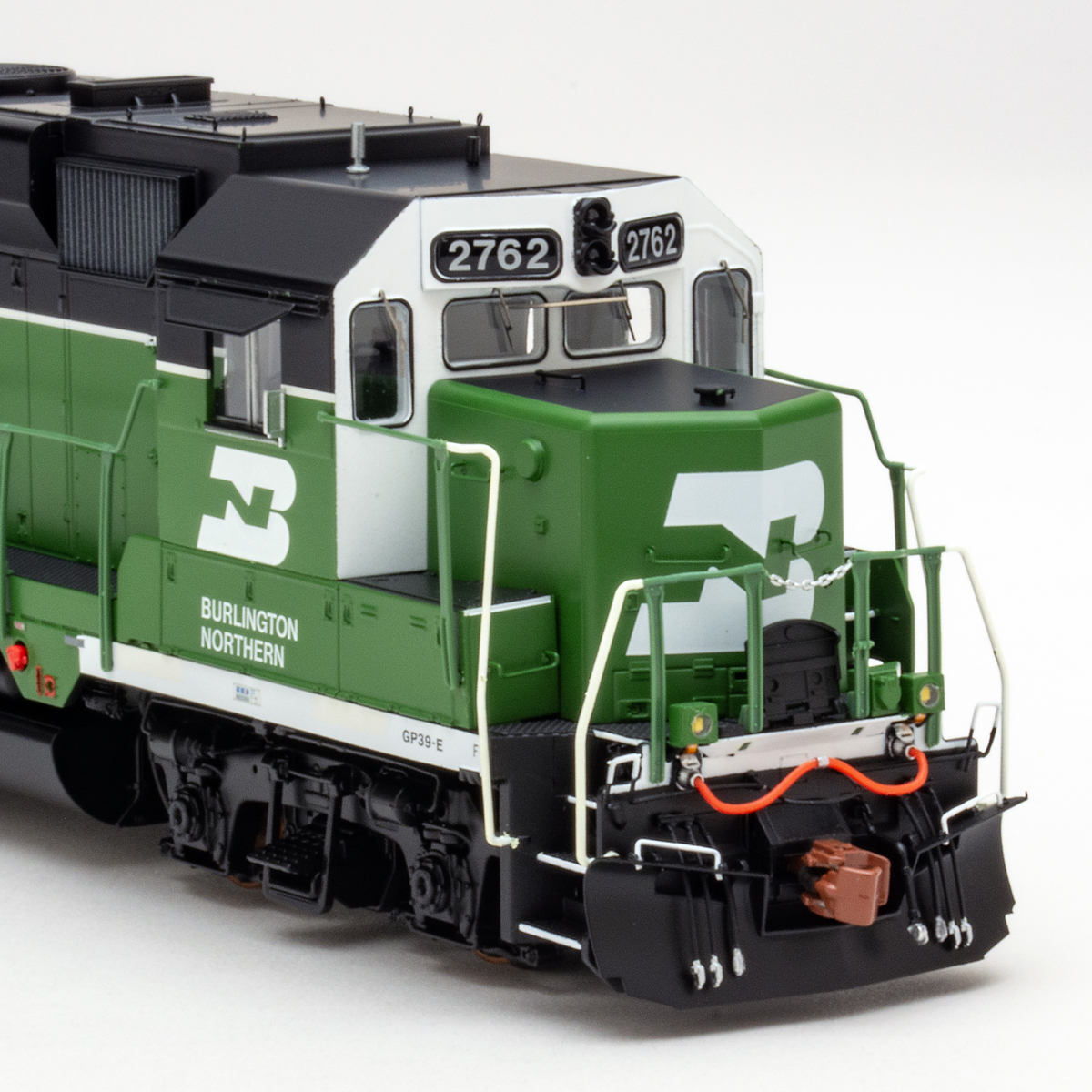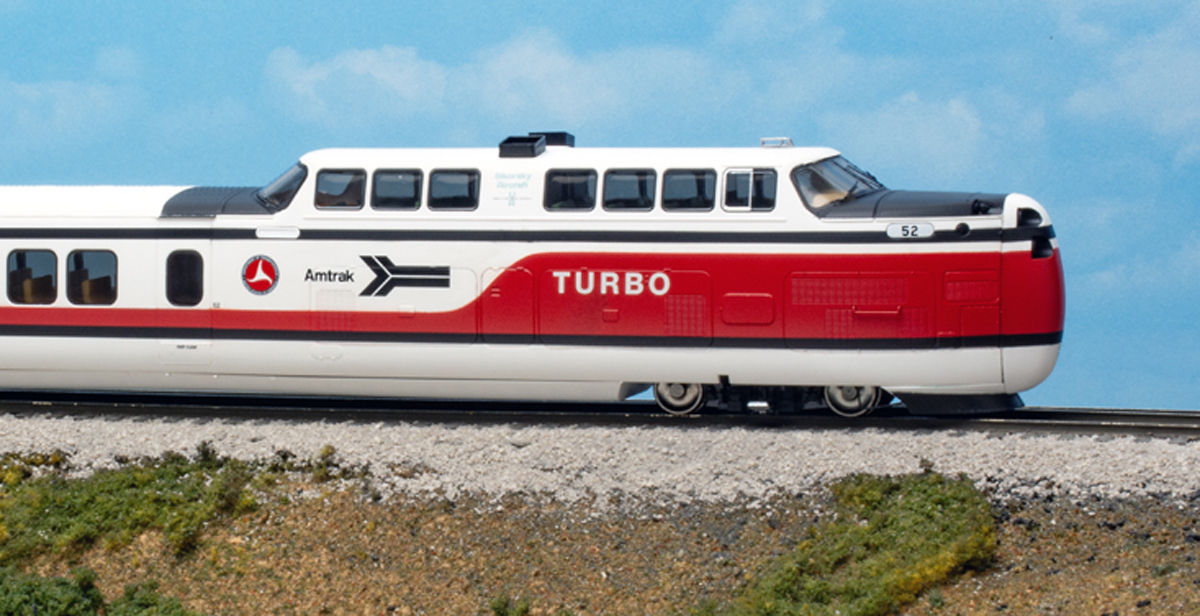Zooming by in a flash of red and pale gray, Deutsche Bahn (DB) Intercity-Express (ICE) trains are 21st century icons of high-speed rail travel in Germany and its surrounding countries. PIKO has upgraded its HO scale ICE 3 passenger train set to include the firm’s new SmartControl Light Digital Command Control (DCC) system.
The set also features a powered car factory-equipped with a dual-mode motor-and-light decoder for operation on DCC and direct-current (DC) layouts. An optional ESU LokSound Select decoder with prototype-specific sound effects is available separately.
The prototype. First developed in the 1980s with InterCity Experimental and continuing in the 1990s with ICE 1and ICE 2, ICE trains serve an evolving system of high-speed rail lines that connect the major cities of Germany as well as cities in Austria, Belgium, Denmark, France, the Netherlands, and Switzerland. Many of the latest ICE trains, including ICE 3 equipment, have in-service speeds of 330 kph (205 mph). The ICE 3 trains are also the only ICE trains powerful enough to handle the 4 percent grade of the high-speed line between the German cities of Cologne and Frankfurt.
Siemens Velaro delivered the first eight-car ICE 3 trains beginning in 2000. Instead of being built as a locomotive-pulled train, the ICE 3 was designed in an electric multiple-unit configuration with traction motors on each car. Two pantograph-equipped coaches collect current from overhead catenary. Including seating in the Bistro car, an eight-car ICE 3 train has a capacity of 441 passengers. The trainsets can also be doubled to 16 cars as needed.
In addition to the original 50 ICE 3 (class 403) trainsets designed to run in Germany, there are 17 ICE 3M or multisystem (class 406) trainsets designed to operate in international service. Another international version, with increased passenger capacity and more efficient operation, Velaro D (class 407) recently entered service.
The model. The PIKO train set includes two cab-end cars (first and second class), a pantograph-equipped second-class coach, and a BordBistro car. An additional second-class coach and a first-class coach with pantograph are also available separately.
The PIKO ICE 3 represents class 403 equipment and measures within scale inches of the prototype’s major dimensions. The model’s plastic components all fit together tightly, helping the model achieve the sleek appearance of the prototype. Separate parts include the sprung metal and plastic pantograph on the pantograph coach.
All the cars feature darkly tinted plastic window glazing. The cars also have molded plastic interior detail.
The paint is smoothly applied with sharp color separation and crisply printed graphics that match prototype photos, including the first- or second-class (1 or 2) designation on the car windows. Even the tiny warning and maintenance stencils along the car sills are legible under magnification. Door seams are represented by black printed outlines.
Mechanism. After removing two screws from the bottom, I could easily lift off the BordBistro car shell. A printed-circuit board and dual-mode decoder are mounted to the top of a die-cast metal weight. Concealed inside this die-cast metal housing, a dual-flywheel-equipped can motor powers one axle of each of the car’s trucks. The wheels of the powered axles have vinyl traction tires.
The train picks up track power through all eight wheels of the first-class end car. Five-pin sockets and plugs serve as couplers between the cars and transmit electricity to the electronics in the BordBistro car as well as the lights in the opposite end cab car. The specially designed coupler drawbars hold the cars close enough so the diaphragms touch on straight track, yet allow the cars to swing out wide enough to handle the 16.6″-radius R2 curves included with the set.
As you can see in the charts above, the ICE 3 accelerated smoothly to prototypical top speeds in both DC and DCC tests. The train also held the rails securely, running at top speed around the included oval of track. During runs on our staff layout, the Milwaukee, Racine & Troy, the ICE 3 easily negotiated no. 6 turnouts and crossings at both high and low speeds.
The light-emitting diode (LED) headlights change to red marker lights when the train changes direction. The factory-installed motor decoder supports two functions: I could turn the lights on or off with function 0 and could activate switching mode for finer slow speed control with function 6.
An installation diagram is included in the set for a custom ESU LokSound Select decoder available from PIKO for $138.99. The decoder simply plugs into the eight-pin socket on the main printed circuit board. Installing the pre-wired speaker requires carefully removing the motor and weight to access the speaker enclosure on the car floor. Note that the motor leads are fragile. They snapped off our review sample, so I had to solder new leads to the motor contacts.
With the sound decoder installed, the ICE 3 really came to life. The 22 user-controlled functions include horns, station announcements, and pantograph sounds. Virtually every sound, lighting, and performance aspect of the decoder can be adjusted by programming configuration variables (CVs).
SmartControl Light. Although it’s not as fully featured as the PIKO America SmartControl system I reviewed in the September 2018 issue, Smart Control Light offers an impressive introduction to DCC. It’s also easily expandable and can be used beyond the confines of a train set oval.
The tethered throttle has a large speed control knob that’s easy to use one-handed. The numbered keypad can be used to trigger up to 24 different functions, making it compatible with the most advanced sound decoders. The easy to read .75″ x 1.5″ digital display shows current train information and various menus, including those for service mode programming or programming on the main. SmartControl Light also supports decoder-equipped turnout control and can handle up to 16 different turnout routes.
Whether you’re looking to add high-speed rail to an existing layout or want to run trains with DCC, the PIKO HO scale ICE 3 SmartControl Light set provides an excellent starting point.
Manufacturer
PIKO America LLC
4610 Alvarado Canyon Rd., Suite 5
San Diego, CA 92120
www.piko-america.com
Era: 2000 to present
Road name: Deutsche Bahn
Set includes:
6 straight tracks and 1 straight terminal track
12 R2 curved tracks
16V, 2.25A power supply
Four car ICE 3 passenger train
Layout requires minimum area of
38.6″ x 66.2″ (98 x 168 cm)
Plastic rerailer
Track features nickel-silver rail and plastic ties with simulated wood grain
SmartControl Light Digital Command Control system
Car features
Chemically blackened metal wheelsets, in gauge
Detailed interiors
Directional light-emitting diode headlights and marker lights on cab cars
First-class cab car has power pickup on eight wheels
Minimum radius: PIKO R2 (16.61″)
Powered bistro car features
Dual flywheel equipped can motor
Dual-mode decoder with eight-pin plug for optional sound decoder
One powered axle with traction tires on each truck
Weight
1 pound, 1.8 ounce (powered bistro); 4.4 ounces (coach); 6.3 ounces (end car)






